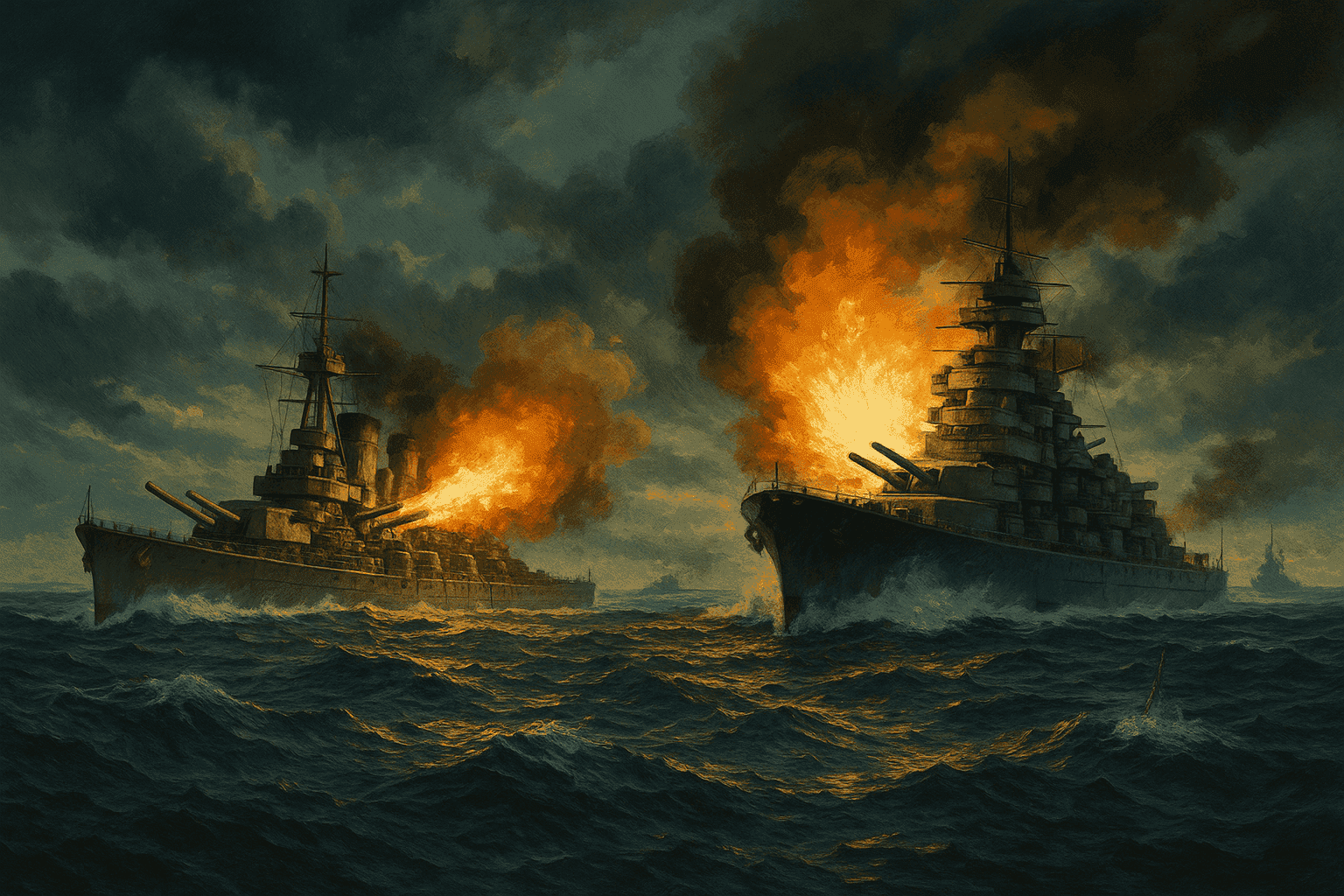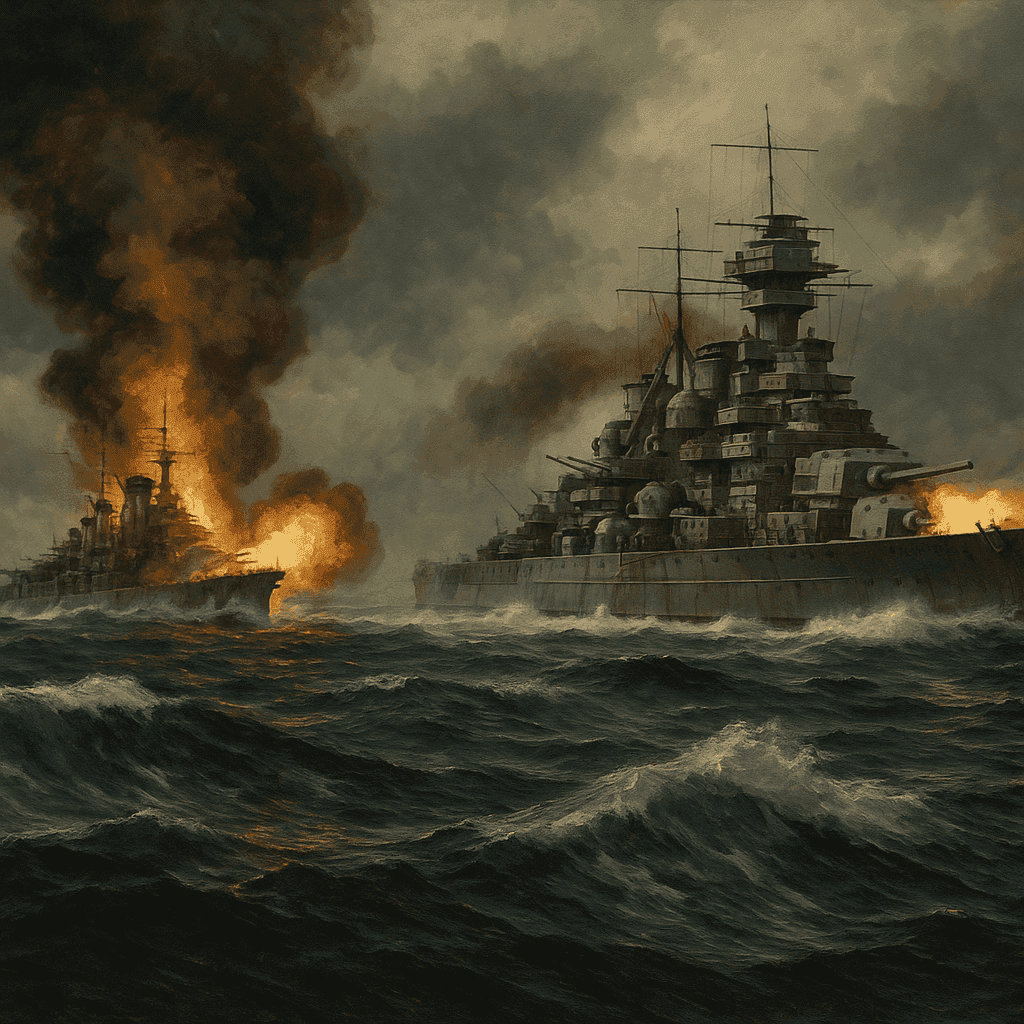On May 24, 1941, in the icy waters of the North Atlantic, the German battleship Bismarck dealt a devastating blow to the British Royal Navy by sinking HMS Hood, one of Britain’s most revered warships. The battle, which lasted mere minutes, resulted in the loss of 1,415 lives—leaving only three survivors. This catastrophic event not only shocked the British public but also marked a defining moment in naval warfare during World War II, highlighting both the lethal power of modern battleships and the strategic vulnerabilities of even the most celebrated vessels.

The Pride of the Royal Navy Meets Its Match
HMS Hood, a battlecruiser commissioned in 1920, had long been seen as the flagship of British naval dominance. Despite being nearly two decades old, it symbolized British power and resolve, particularly in the early years of World War II. In contrast, the Bismarck was one of Nazi Germany's newest and most formidable battleships, equipped with advanced armor and heavy guns.
As the Bismarck, accompanied by the heavy cruiser Prinz Eugen, attempted to break into the Atlantic to disrupt Allied shipping, the Royal Navy moved swiftly to intercept. The confrontation occurred in the Denmark Strait, between Iceland and Greenland.
A Battle and a Catastrophe
At approximately 6:00 a.m. on May 24, the two sides opened fire. Within minutes, a shell from Bismarck struck HMS Hood near her aft magazine, triggering a massive explosion that broke the ship apart. The Hood sank in less than three minutes. Of the 1,418 crew members aboard, only three survived—an immense and immediate tragedy for the Royal Navy.
The loss sent shockwaves through Britain. As one of the most recognized symbols of British naval might, the destruction of HMS Hood was both a tactical and psychological blow at a time when morale was crucial.

The Hunt for the Bismarck
Following the sinking of Hood, the Royal Navy launched an all-out pursuit of the Bismarck, determined to avenge the loss. Over the next three days, a massive force of British ships and aircraft hunted the German battleship. On May 27, 1941, after being crippled by torpedoes from British aircraft and surrounded by Royal Navy warships, Bismarck was finally sunk.
The destruction of the Bismarck was a significant strategic victory for the Allies and served as a powerful response to the loss of the Hood.
A Lasting Legacy

The sinking of HMS Hood on May 24, 1941, remains one of the most poignant naval tragedies in British history. It exposed the vulnerabilities of older warships against newer, more heavily armed adversaries and accelerated changes in naval design and strategy, including the growing reliance on aircraft carriers and air power at sea.
The loss of life and the rapid destruction of such a storied ship were sobering reminders of the brutal reality of modern warfare. Memorials and naval tributes continue to honor the bravery of the Hood’s crew and the significance of the battle that forever altered naval history.